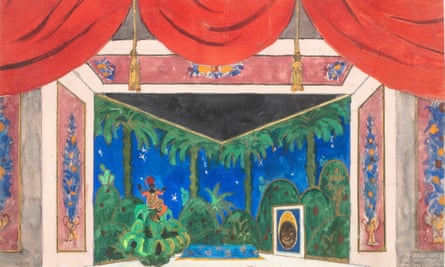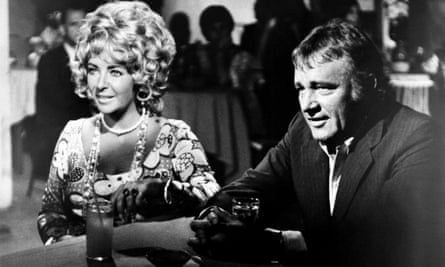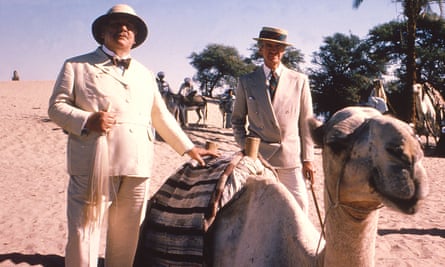The Oscar-winning actor, writer and director Peter Ustinov was the renaissance man of his time; a renowned wit and raconteur in the six languages he spoke fluently plus the two he could get by in.
Now, a sale of his art and personal effects – including annotated scripts and awards – speaks volumes of the “cosmopolitan and cultivated” tastes of the man whose 64-year career included 80 films, dozens of television appearances, numerous books, novels, short stories and plays and a plethora of awards and honours.
More than 19 years after Ustinov’s death, 170 objects from the actor’s eclectic collection, the highlight of which is La Liseuse, an impressionist work by Pierre-Auguste Renoir valued at more than £1m, are being auctioned by Sotheby’s in Paris.
Ustinov’s Golden Globe for his portrayal of the Roman emperor Nero in the 1951 film Quo Vadis – for which he also won an Oscar – drawings by Pablo Picasso and Toulouse-Lautrec as well as film scripts for Spartacus directed by Stanley Kubrick complete with Ustinov’s annotations and sketches are also being sold.
The actor, who would say he was conceived in Leningrad and born in London, was from an artistic Russian family that emigrated to the UK after the revolution. Paintings by his mother, Nadia Benois, including portraits of Ustinov as a boy, and models of sets designed by his great uncle the Russian artist Alexandre Benois, commissioned by the Ballets Russes and the Royal Ballet in Covent Garden are up for auction along with paintings by the Swiss-French artist Félix Vallotton.
In a pre-sale interview from her home in California, Pavla Ustinov, the second of his four children, whose mother was the Canadian actor Suzanne Cloutier, said she had mixed feelings about the objects from her childhood. Most were collected between 1963 and 1968 when the family lived at Neuilly-sur-Seine, on the outskirts of Paris.
Pavla, like her father an actor, writer and director, who went on to appear with Ustinov on stage, television and in film, recalls the arrival of La Liseuse in the family’s French apartment in 1965.

“My parents had been out walking and I specifically remember them coming back with the Renoir because it was my 11th birthday. There were endless discussions where to put it – and it was moved around – though I don’t remember where it ended up,” Pavla said.
“But that was my father … he did everything completely spontaneously. He didn’t have an organised mind. Him coming home with a Renoir was our normal.”
Pavla, describes a childhood that was “chaotic to put it mildly”. The children were frequently uprooted to move country to fit in with their father’s career.
“He was a very absent father. He would say, ‘I’ll see you tomorrow’ and then disappear for six months. Of course, you don’t get that from the photographs where we look like one big happy family,” she said.

The children’s “normal” included visits by some of the era’s biggest stars. On one occasion, Pavla ran away from a school skiing trip and hitchhiked to David Niven’s Swiss chalet.
“David called the headmistress and said I was distraught. Before I went back, he gave me some stripy red toothpaste and said I should put some on my finger and hold it near my eyes and it would look as if I’d been crying. We practised this a few times together. He was a lovely man.”
Another time, Richard Burton and Elizabeth Taylor visited the Ustinovs’ Paris home.
“We’d returned from three months in Turkey and my brother Igor and I used to be made to dress up in Turkish costumes – with pointy shoes, baggy trousers and bare bellies – and dance when guests came round. It was extremely embarrassing.

Photograph: Everett Collection Inc/Alamy
“One day Elizabeth Taylor was there, sitting on the couch wearing a too-tight dress. While we were doing our belly dance she gave us a very unamused look as if we were being a nuisance. Richard Burton looked really miserable, I felt sorry for him. While Peter and Elizabeth were talking, Richard went to the guest toilet in the foyer and was throwing up. I didn’t know if he was ill or drunk but I stood behind with a box of Kleenex handing him tissues.”
Ustinov – popularly remembered for his portrayal of Agatha Christie’s famous detective Hercule Poirot – died in Switzerland in 2004 aged 82 without a recognised will. Since then, his estate, inherited by his third wife, Hélène du Lau d’Allemans, has been at the centre of a prolonged and bitter family battle. Much of the wealth has been squandered in legal bills.
Pierre Mothes, vice president of Sotheby’s France, said the collection reflected Ustinov’s “cosmopolitan and refined” personality. “He came from an unusual family of artists and had great taste. He was a good collector but there was no theme: it was a question of passion. He bought with his heart,” Mothes said.

Pavla added: “This collection he made with our mother was collected definitely with love. It was not calculated or put together with any consideration of money. They would go out treasure hunting, see something and buy it. Sentimentally speaking, the collection represents his entire successful life.”
“We children didn’t think much about it; it was the life we had, it was our normal. But seeing them in the auction has brought back memories.”

